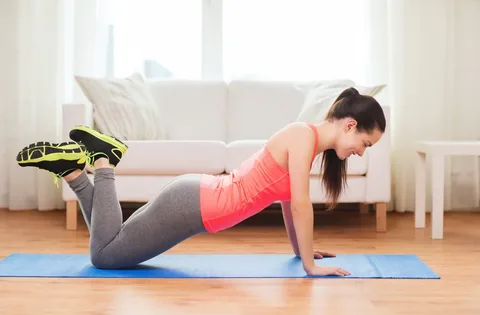The squat rack is a versatile and indispensable piece of equipment found in most well-equipped gyms. While commonly associated with squats, this robust apparatus can be used for a variety of exercises that target multiple muscle groups. In this blog post, we will explore five exercises that involve a squat rack, helping you optimize your workouts and achieve impressive gains. So, let’s dive in and discover the power of the squat rack beyond just squats!
- Barbell Squats:
Let’s start with the exercise that the squat rack is most famous for – the barbell squat. This compound movement engages your quadriceps, hamstrings, glutes, and core, making it an excellent exercise for building lower body strength and size. The squat rack provides a sturdy platform to safely load and unload heavy weights, making it ideal for performing barbell squats. Remember to maintain proper form, keep your core engaged, and gradually increase the weight to maximize your gains.
- Overhead Press:
The overhead press is a fantastic upper body exercise that primarily targets the shoulders, triceps, and upper back. By utilizing the squat rack, you can perform the barbell overhead press with stability and safety. Position the barbell at shoulder height on the rack, step underneath it, and grip the bar slightly wider than shoulder-width apart. Press the barbell overhead, extending your arms fully, and lower it back down to the starting position. This exercise not only builds shoulder strength but also enhances stability and core engagement.
- Rack Pulls:
Rack pulls are an effective exercise for developing a strong and powerful back. By setting the squat rack at knee height, you can perform this variation of the deadlift, focusing on the upper back, traps, and hamstrings. Load the barbell with an appropriate weight, position it at knee level on the rack, and stand with your feet shoulder-width apart. Engage your core, keep your back straight, and pull the barbell up, driving your hips forward until you achieve a full extension. Lower the barbell back to the starting position and repeat for desired repetitions. Rack pulls allow you to handle heavier weights, improving overall strength and muscle development.
- Front Squats:
While the traditional barbell squat emphasizes the posterior chain, front squats target the quadriceps, core, and upper back to a greater extent. To perform front squats using a squat rack or without a squat rack, position the barbell at shoulder height, grasping it with an overhand grip and crossing your arms in front of you. Step back and ensure the bar rests comfortably on the front of your shoulders. Perform the squat motion, keeping your core tight, chest up, and lowering until your thighs are parallel to the floor. Front squats are an excellent exercise for building leg strength, improving posture, and enhancing overall athleticism.
- Pull-Ups:
A squat rack equipped with a pull-up bar opens up the possibility for a challenging bodyweight exercise – pull-ups. Pull-ups engage multiple muscles, including the back, biceps, shoulders, and core. By using the squat rack’s pull-up bar, you can perform this exercise with stability and control. Grab the bar with an overhand grip, slightly wider than shoulder-width apart, and hang with your arms fully extended. Initiate the movement by pulling your body upward until your chin is above the bar, and then lower yourself back down. Vary your grip to target different muscle groups and gradually increase the number of repetitions to build upper body strength.
Conclusion
The squat rack is undoubtedly a versatile piece of equipment that extends beyond its association with barbell squats. Incorporating these five exercises into your routine – barbell squats, overhead press, rack pulls, fronts quats, and pull-ups – will provide you with a well-rounded workout that targets various muscle groups and promotes overall strength and muscle development.
Remember to always prioritize proper form and technique when using the squat rack or power cage for these exercises. Start with lighter weights and gradually increase the load as you become more comfortable and confident with each movement. Additionally, ensure that the squat rack is set up correctly and that the safety features, such as the safety bars or spotter arms, are properly adjusted to provide an added layer of security during your workouts.
Incorporating these exercises into your routine can lead to a multitude of benefits. They help improve strength, build muscle mass, increase overall power and athleticism, and even contribute to enhanced posture and stability. However, it’s essential to listen to your body and respect your limits. If you experience any discomfort or pain, adjust the weight or consult a fitness professional for guidance.
To make the most of your workouts, consider incorporating these exercises into a well-structured training program. Combine them with other exercises that target different muscle groups, include appropriate rest days, and focus on progressive overload to continually challenge your body and stimulate muscle growth.
In conclusion, the squat rack is a valuable piece of equipment that offers more than just the opportunity to perform barbell squats. By incorporating exercises like barbell squats, overhead press, rack pulls, front squats, and pull-ups into your routine, you can take full advantage of this versatile tool and maximize your gains. So, step up to the squat rack and unleash your full potential in the pursuit of strength, muscle growth, and a fitter, healthier you!

